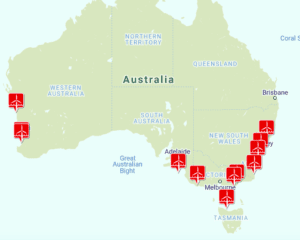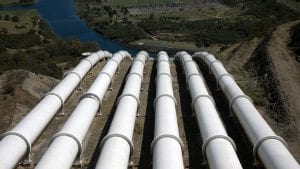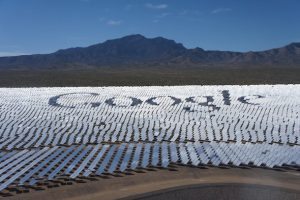Australia’s main grid, the National Electricity Market, reached a share of 50 per cent renewables again on Tuesday, despite the temporary shut down of seven solar farms in NSW and one of the state’s biggest wind farms to allow for maintenance on a major transmission link.
The 50.3 per cent renewable energy share was reached at 1200 (grid time, which is AEST rather than daylight savings time), and included just 1.6 per cent of hydro. Rooftop solar was the biggest contributor, with 29.5 per cent of total demand, followed by wind energy (11.3 per cent) and utility scale solar (7.8 per cent).
The share of renewables might have been much more were it not for the closure of seven solar farms in the south west region of NSW to allow for Transgrid to conduct maintenance of a major 330kV line, which limited the contribution of large scale solar to just under 2,000MW.
The solar farms affected, Colleambally, Darlington, Limondale 1 and 2, Griffith, Finley and Bomen, have a combined rated capacity of more than 800MW, and would have been expected to contribute nearly that much given the sunny conditions and the strong output of solar farms in the region on Tuesday.
The maintenance schedule – due to last for two days – also affected the 200MW Silverton wind farm, which like the Broken Hill wind farm is located near the mining city of the same name and owned by the Powering Australian Renewables Fund, jointly owned in turn by AGL and the Queensland Investment Corporation.
Reaching 50 per cent renewables has becoming increasingly common in a grid which for the last two months has averaged more than 30 per cent renewables, although the benchmark is most often reached at weekends, at times of low demand – although Tuesday is also Melbourne Cup today, albeit without the crowds this year.
In fact, demand in Victoria on Tuesday was higher than it was on Sunday, although wind and solar (and no hydro) were contributing around 61.7 per cent of state demand in the middle of the day. More than 800MW was being exported into NSW, while another 400MW was being exported to Tasmania.
South Australia was running at more than 103 per cent of demand from wind and solar – despite the 95MW Tailem Bend solar farm switching off to dodge negative prices – and was exporting more than 400MW of excess capacity into Victoria.










